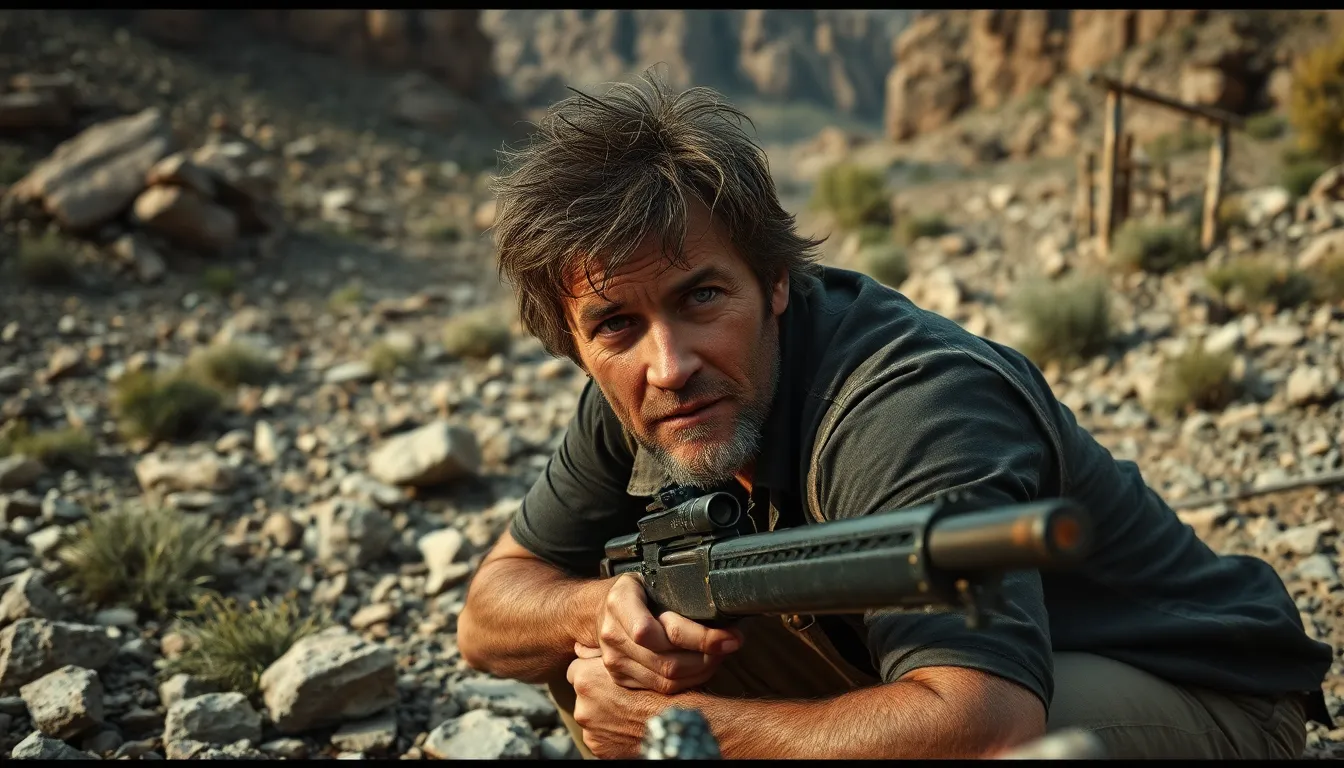In a world where survival often hinges on the choices one makes, Straw delves into the complexities of human nature and the consequences of our actions. This gripping film weaves a tale that explores themes of desperation, morality, and the lengths people will go to protect their loved ones. As the narrative unfolds, viewers are drawn into a compelling story that challenges their perceptions of right and wrong.
Set against a backdrop of tension and uncertainty, Straw captivates audiences with its raw portrayal of characters facing dire circumstances. Each decision carries weight, leading to unforeseen outcomes that keep viewers on the edge of their seats. As the story progresses, it becomes clear that the film isn’t just about survival; it’s about the choices that define us and the impact they have on our lives and those around us.
Table of Contents
ToggleOverview of the Movie Straw
The movie “Straw” delves into the intricate layers of human behavior, particularly in extreme situations. Set against a backdrop of survival, the plot unravels as characters confront moral dilemmas that challenge their values. Each character’s journey showcases a diverse range of reactions to desperation, posing poignant questions about ethics and integrity.
Key themes include:
- Desperation: Characters face life-altering choices, pushing them to their limits.
- Morality: The film examines how circumstances influence individuals’ sense of right and wrong.
- Protection: Relationships become central as characters struggle to safeguard their loved ones.
“Straw” effectively illustrates how decisions in crisis moments can lead to unforeseen consequences, thus redefining the concept of survival. The narrative leaves audiences pondering the distinction between heroism and villainy, ultimately affecting their understanding of identity and interpersonal relationships.
Plot Summary

“Straw” presents an intense exploration of human nature amid survival crises. The film intricately weaves the struggles and moral choices faced by its characters, revealing the impact of desperation on their decisions.
Key Characters
- Main Protagonist: The central figure navigates desperate circumstances, facing moral dilemmas that test their values.
- Antagonist: This character embodies the darker aspects of survival, presenting obstacles that challenge the protagonist’s drive to protect loved ones.
- Supporting Characters: A diverse group of individuals influences the narrative, highlighting different reactions to extreme situations and adding depth to the exploration of relationships.
Major Themes
- Desperation: The film illustrates how dire situations can drive individuals toward life-altering decisions, often forcing them to choose between morality and survival.
- Morality: Characters confront ethical dilemmas that challenge their principles, emphasizing the shifting nature of right and wrong when circumstances change.
- Relationships: The centrality of interpersonal connections serves as a motivating force for characters, highlighting the lengths they’ll go to safeguard their loved ones and the sacrifices they’re willing to make.
Cinematic Techniques
“Straw” employs various cinematic techniques that enhance its storytelling and emotional impact. The director uses a combination of unique directing styles and striking visual aesthetics to draw viewers deeper into the characters’ journeys.
Directing Style
The directing style in “Straw” stands out due to its raw and immersive approach. The director focuses on naturalistic performances, encouraging actors to express genuine emotions in high-stakes scenarios. Close-up shots highlight characters’ internal struggles, capturing subtle facial expressions and reactions. The use of handheld cameras creates a sense of urgency, placing viewers in the midst of the action and enhancing the film’s intensity. Additionally, the pacing fluctuates between frantic sequences and moments of quiet reflection, allowing audiences to process the emotional weight of the characters’ decisions.
Visual Aesthetics
The visual aesthetics of “Straw” significantly contribute to its thematic depth. The cinematography utilizes a muted color palette, reflecting the bleakness of the characters’ environments and emotional states. Strategic lighting techniques create contrasts between shadow and illumination, symbolizing the characters’ moral dilemmas. The framing of shots often isolates characters within their surroundings, emphasizing their struggles and decisions. Furthermore, the use of natural landscapes serves as a backdrop that contrasts with the intense human drama, reinforcing the theme of survival against the elements. These visual choices collectively enhance the narrative and resonate with the film’s exploration of human nature and morality.
Reception and Critique
“Straw” garnered significant attention from both audiences and critics due to its compelling narrative and distinct exploration of human morality. The film’s reception highlights its impact and the diversity of opinions regarding its themes and execution.
Audience Response
Audiences reacted strongly to “Straw,” with many praising its raw depiction of desperation and moral complexity. Viewers expressed empathy for the characters, often feeling torn between their actions and the ethical implications involved. High engagement levels on social media platforms reflect the film’s resonance with audiences, sparking discussions about morality and survival. The emotional weight of the narrative and the relatable character arcs contributed to a favorable response, as many cited the film as thought-provoking and intense.
Critical Reviews
Critics provided a mixed overview of “Straw,” highlighting its bold storytelling and cinematic prowess. Some reviews lauded the director’s immersive style and the strong performances that brought depth to complex characters. Critics noted the film’s effective use of visual techniques, such as close-up shots and a muted color palette, which enhanced the emotional resonance of the story. However, certain reviews mentioned pacing issues and narrative gaps that could overshadow the overall experience for some viewers. Despite differing opinions, the film’s exploration of morality in survival situations remains a central point of critique, with many suggesting that it challenges traditional portrayals of heroism and villainy.
“Straw” stands as a thought-provoking exploration of human nature and the moral complexities that arise in desperate circumstances. Its intense narrative and character-driven storytelling challenge viewers to reflect on the choices made in the face of survival. The film’s raw emotional depth and striking visual style enhance its impact, leaving a lasting impression on audiences.
As discussions about the film continue to unfold, it becomes clear that “Straw” not only entertains but also invites critical examination of morality and identity. The engaging portrayal of characters navigating their darkest moments resonates deeply, ensuring that the themes of desperation and moral ambiguity linger long after the credits roll.



